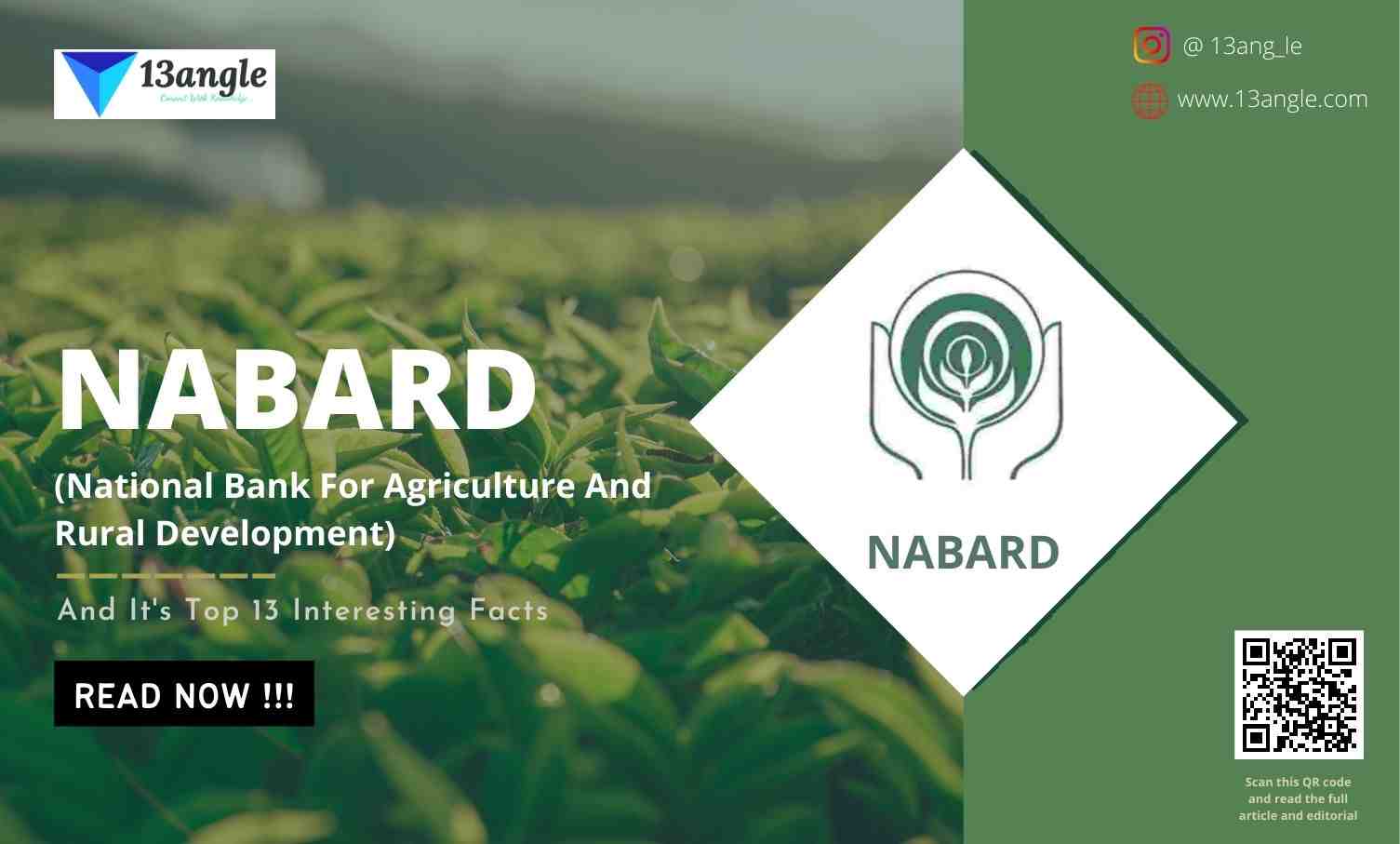
Introduction
- Daman and Diu is a former union territory in northwestern India. It was a separate union territory until 26 January 2020 before it was merged with Dadra and Nagar Haveli union territory to form a single UT due to its small landmass. The territory comprised two districts, Damaon and Dioisland, which are separated geographically by the Gulf of Cambay. It was the smallest administrative subdivision of India on the mainland with an area of 112km2 (43 square miles). The territory is bordered by the state of Gujarat and the Arabian Sea.

It was initially a Portuguese colony since the 1500s then the territories were taken by India with the Annexation of Goa in 1961. From 1961 to 1987, Daman and Diu were administered as a part of the union territory of Goa. Until the Goa Opinion Poll was held and they became a separate union territory. After then in the year 2019, a bill was passed by the parliament to merge the union territory of Daman and Diu with its neighboring union territory Dadra and Nagar Haveli to form the new union territory of Dadra and Nagar Haveli and Daman and Diu which came into effect from 26 January 2020.
The culture and religion which are commonly seen being followed are Hinduism. Although now Muslims are the second-largest religious group in the territory closely followed by the indigenous Christian group. The Daman and Diu‘s Catholic Christians are pastorally served by the Metropolitan Roman Catholic Archdiocese of Goa and Daman.
Historical Background
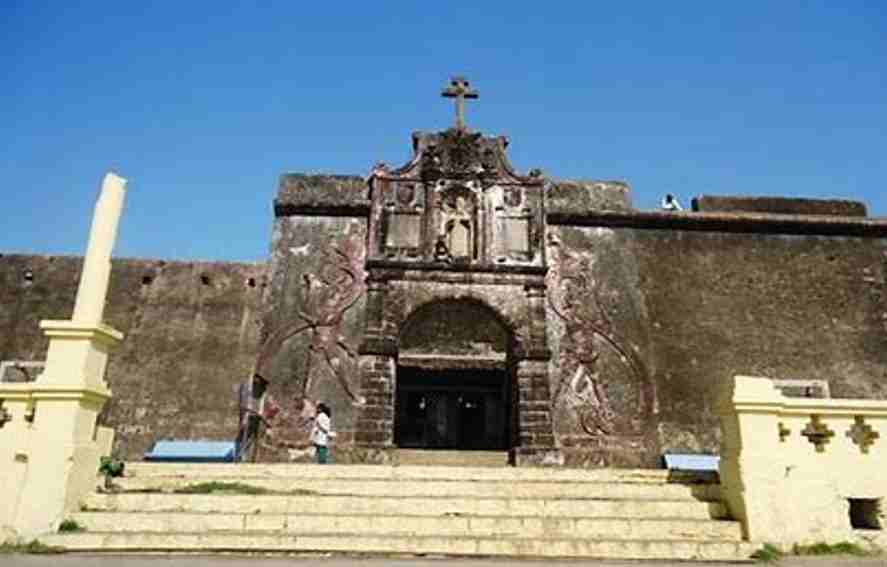
For over 450 years, the coastal enclaves of Daman and Diu were part of Portuguese on India‘s Arabian Sea coast along with Goa and Dadra, and Nagar Haveli. Portugal did not recognize the Indian annexation of these territories until the Carnation Revolution of 1974. Hence after the military conquest on 19 December 1961, Goa, Daman, and Diu were incorporated into the Republic of India. Many few only know that the territory was been ruled by Kolis. This territory of Goa, Daman, and Diu were administered as a single union territory until 30 May 1987, then afterward Goa was granted statehood thus leaving Daman and Diu as a separate union territory. Later on in the month of December 2019, with the legislation of the parliament of India, a bill was passed to merge Daman and Diu with the nearby union territory of Dadra and Nagar Haveli to create a new union territory to be known as Dadra and Nagar Haveli and Daman and Diu.
One of the historical disputes in daman history was seen on 3 November 2019, that Daman Collector Rakesh Minhas issued an order under Section 144 banning peaceful assembly of four or more persons, slogan-shouting, and the use of loudspeakers across the entire district and also ordered the conversion of Government High School, Bhimpore and the Government Sarvottam High School in Moti Daman into ‘temporary jails’. This was basically in response to a land ownership dispute between the local indigenous fishing community and the local administration that had confiscated their land and bulldozed their homes. These 2019 Daman Indigenous Land Clearing Protests resulted in the detention of 70 protesters in the ‘temporary jails’ and another 8 arrests. Among them, few of the Adivasi fisher folk were rehoused whilst most languished traumatized and homeless on the streets near the rubble of their razed homes.
Demographics
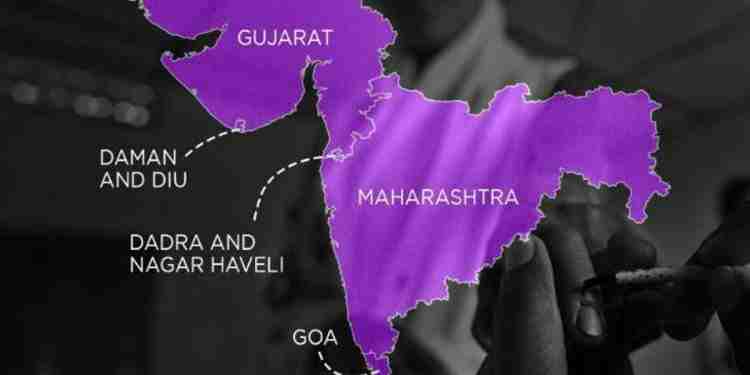
1. Geographical Demarcation
- Daman and Diu are approximately 650 kilometers away from each other by road. With Diu District covering an area of 40 km2 (15 square miles) while Daman covering an area of 72 km2 (28 square miles).
2. Languages Used
India is often referred to as a “tower of veritable languages” or a “Museum of languages”. The same way Daman and Diu are often referred to as mini-India especially Daman. As people from different religions live there and use their language to communicate but it was every so often noticed that due to the Gujarati-speaking Damaniya sub-caste Gujarati was the mother tongue of most of the territory’s population. Along with Gujarati, Hindi and English are also widely used in this territory. In ancient times Konkani language was also used as Daman and Diu was once a part of the combined union territory along with Goa (which was a Konkani-speaking region) that was before Goa became a separate state in 1987.
In the colonial period, the use of the Portuguese language which was the territory’s official language during that era is now in decline and is relegated to home use only. It was also used as a liturgical language by the territory’s Catholics. Daman and Diu Portuguese are spoken by about 10,000–12,000 people in Daman. Although the languages taught in schools in Daman and Diu were under the three-language formula rule:
- First language: Gujarati
- Second language: Hindi
- Third language: English
Government Administration
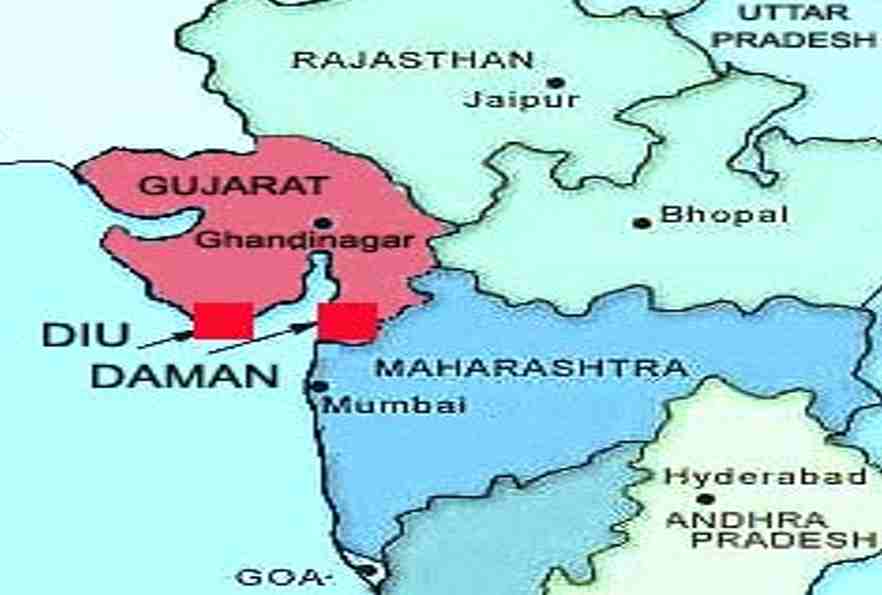
There is no state government or Governor in Daman and Diu. According to the Constitution of India, the administration of Daman and Diu was carried out by an Administrator which is appointed by the President of India, as an agent of the President and not as a head of state/government or a governor. He is assisted by several other officers in carrying out his duty. However, there is one Lok Sabha (Parliament) seat from the union territory.
Daman
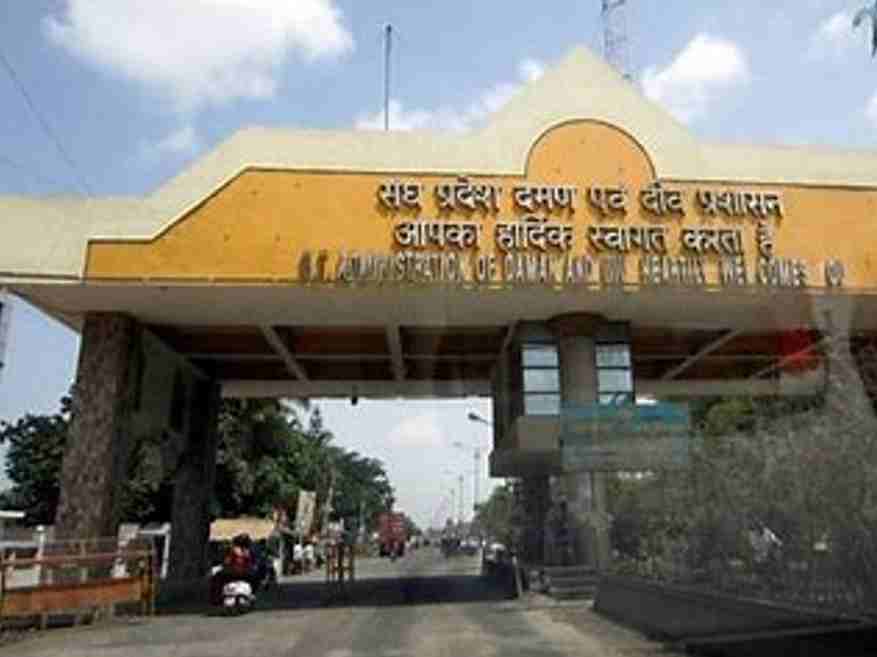
Daman has always been tantamount to terms like the blue sea, rustic beaches, picturesque villages, and relics from its Portuguese past. As it was Portuguese territory for over 300 years and was liberated in the year 1961 along with Dadra and Nagar Haveli, Goa, and Diu. Lying on the banks of the Daman Ganga River. Its landmark demarcation is usually determined as about 193 km north of Mumbai which lies sandwiched between Gujarat and Maharashtra. With upholding a population of 191,173 out of which male were 1,24,659 and female were66,514 respectively according to 2011 census, which was an increase from the year 2001 census of 1,13,989 which involve males about 71,634 over 42,355 females.
Since Daman has been a union territory of India, the influence of the Portuguese culture has always been clearly evident in its architecture, way of life, and food habits. It is often noticed that people belonging to European, African, and Indian origin have settled in Daman which leads to the stimulus of these diverse cultures in manifesting their essence in the dance, food, and music of Daman. As different dance forms like the Verdigao, Vira, and Mando show a Portuguese tradition. Along with this is strong, dance form like Garba too has made their way across the Gujarat border into Daman.
As Daman is linked with the Gujarat border, the most common language used in daman is Gujarati and then another language like Hindi, English, and the old people living there speak Portuguese due to which there are still few convent schools that teach Portuguese and French along with English and Hindi language.
From the total population, the literate population of Daman was 150,348. As of which the rural areas of Daman have an average literacy rate of 86.15 percent whereas in a rural area the total literates stands with 24,893 out of which literacy rate of males and females stood at 92.07% and 78.19% respectively.
Most Famous Places In Daman
1. Mirasol Lake Garden:-
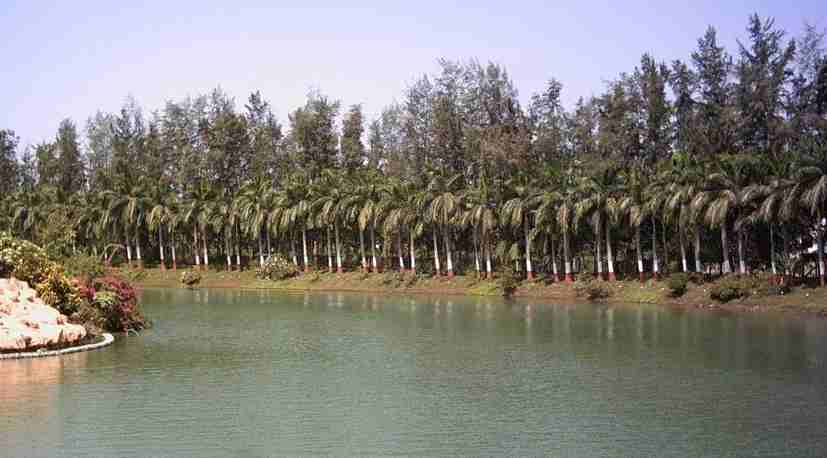
- Basically Mirasol Lake Garden is a man-made marvel which serves as one of a most popular tourist attraction in the area. It is surrounded by a beautiful lake and two island connected by a bridge. This scenario makes it very calm and peaceful. Along with this the boat rides and fountains add beauty to this charming garden. The garden also has facilities for other activities like computer games and toy trains etc. which makes its favorite hotspot for picnickers specially kids. And with a water park located just next it, it serves as an amazing lake garden location for many film shootings.
2. Devka Beach:-
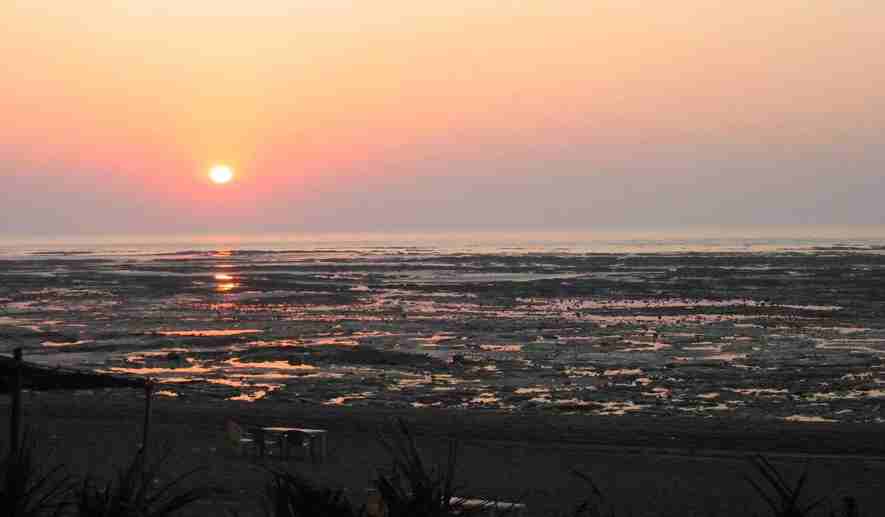
- Another one of the famous places to visit is Devka beach which is a sight of pure beauty. Like so many other beaches of Daman this too is a massive picturesque and quite relaxing spot. The place has clean blue waters, well maintained shores and enough beauty for everybody. Also, there is a special Amusement Park here which houses huge fountains and play area for kids. The Devka Amusement Park is happily situated overlooking the beach and is a perfect destination to travel with your family. With exciting options like water balloon raft, bungy-jumping, swings and cricket pitch, the park is filled with activities that will make your day. There is a beautiful garden at the center of the park that is perfect for spending some quiet leisure time.
3. Jampore Beach:-
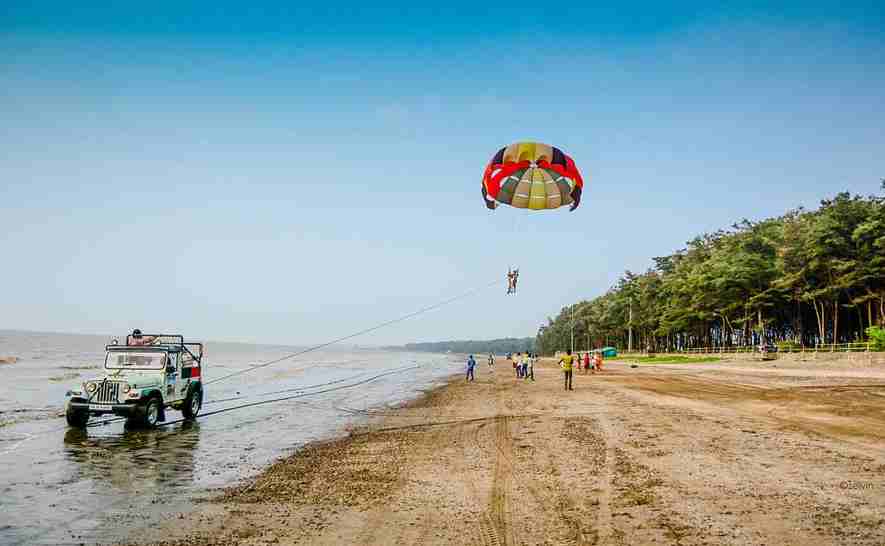
Jampore beach is one of the significant attractions in Daman which is situated remotely 5 kilometers away from the Moti Daman Jetty beach. The Jampore beach got its fame due to its blackish mud-colored water and its ecstatic look as it is covered with the tree and gives breezy greenery vibes to the visitors. It is a perfect place for the ones seeking longing for peace and solitude as the beach is away from all the hustle of the city and is hence a great place to relax.
It is a place where one wants to forget all its tension and enjoy the moment of your life by cherishing all the wonderful memories of one’s life. Visitors are often seen to go for shell hunting or build castles on the sand or just walk by the sea and capture the beauty of the sunset. In shorts, it’s a place to choose for a perfect vacation break by enjoying the moment under the shades of its tree and looking at the artistry of the wave.
4. St Jerome Fort
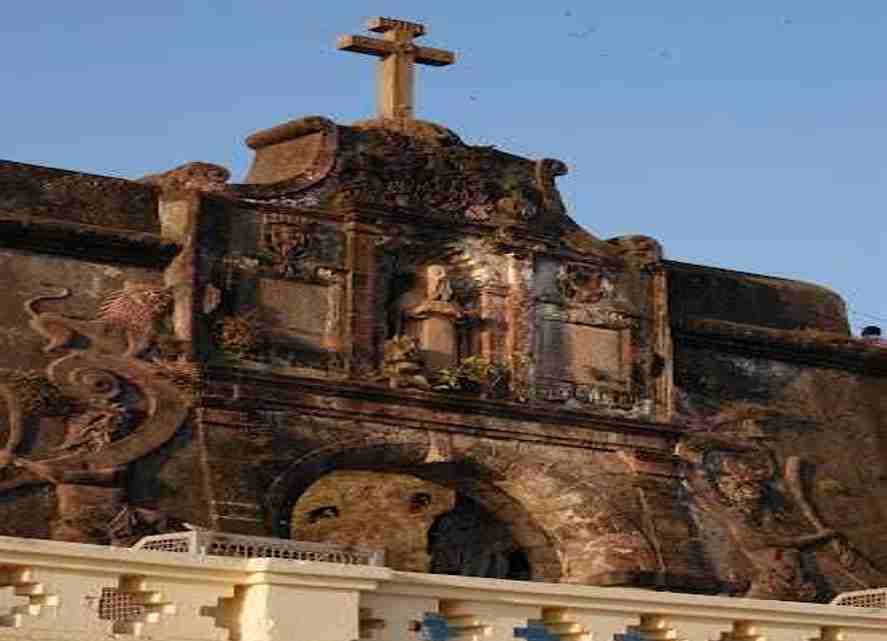
This is a huge fort which is also known as the Nani Daman Fort. The most conspicuous part of this place is its magnanimous gateway that faces the river. There is a large statue of St. Jerome, one of the most eminent fathers of the Catholic Church, inside the fort premises. The complex contains some other attractions such as the church of ‘Our Lady of the Sea’ and a Jain temple. The fort as a whole offers a beautiful view of the fish market below and the hustle-bustle that comes along with it. The scenery is beautiful and is counted as one of the most pretty and popular tourist attractions spots.
Diu
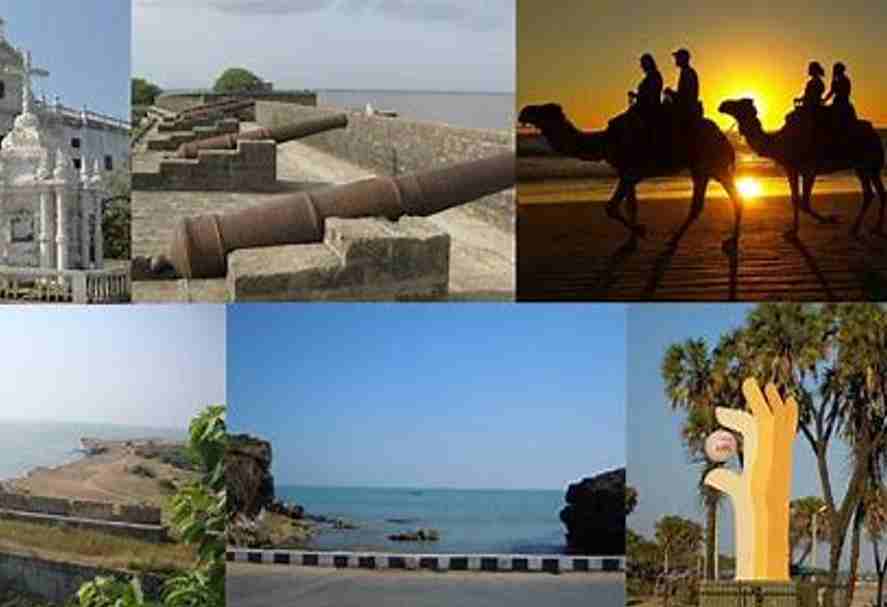
- Diu is located near the port of Veraval, which is a small island which was earlier a Portuguese colony and is now guarded by beaches all around. It takes up most popularity given the ample number of beaches, along with Gujarat’s southern coast such as the Nagoa beach and has a lot more to offer too. This is why it is often referred to as “A mini-Goa”. As according to the 2011 Census of India, Diu had a population of around 23,991 spread over 5,249 households among which males constituted 48.4% of the population and females 51.6%. of a population of 23,991 it had an average literacy rate of 92% in which 10% of the population of Diu is under 6 years of age. In this the average literacy rate in urban areas is 92.2% while that in the rural areas is 75.6%. in Diu the sex Ratio of Urban areas in Diu district is 1,066 while that of Rural areas is 1,002.
Most Famous Places In Diu
1. Naida Caves:-
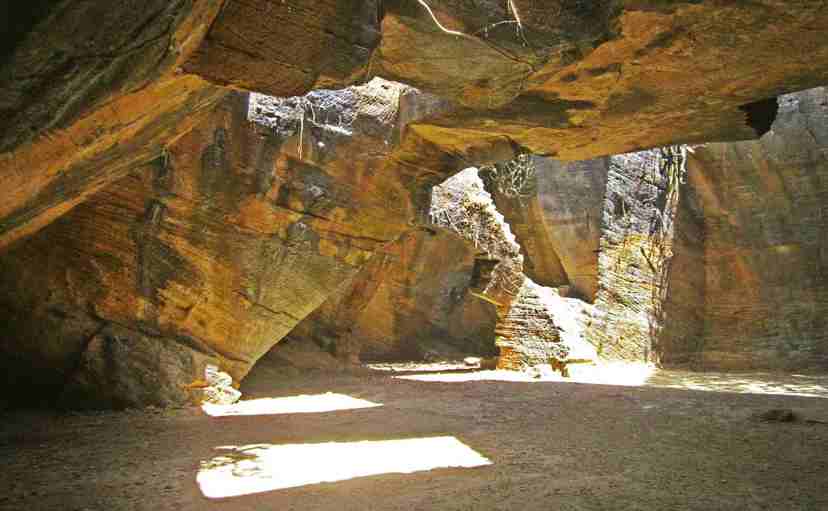
- Located outside the city wall of the Diu Fort, the Naida Caves are a group of interlinked caves constructed by the Portuguese. The caves are only a short distance away from the Diu town and they feature a big network of tunnels with square hewn steps that remain completely unexplored. Naida Caves is one of the most underrated tourist attractions of Diu but it is as wholesome for an explorer or a history buff as for a photographer. Naida Caves got their shape eventually after the Portuguese ruled over Diu and broke down sections of a huge rock formation that they used for construction. Interestingly, these caves were formed due to geological irregularities and natural processes over time. Naida Caves is slowly being recognized as one of the most magnificent attractions since prehistoric times. The caves also have a natural opening that lets in sunlight, making them photogenic. During the 20th century, when the Portuguese were not ready to leave Diu, Operation Vijay was launched to seize control by the Indian Army, and several soldiers were stationed at the Naida Caves during that time.
2. Nagoa Beach:-
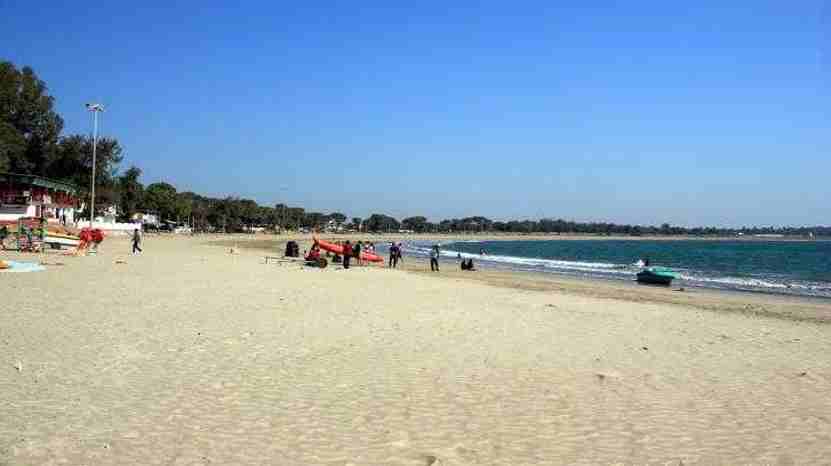
Famous for its pristine beauty and swaying palm trees, Nagoa Beach in Diu is an ideal and recommended place for tourists all over the world. The place is well connected with the resorts, hence it making it easy for travelers to relax and explore its beauty at the same time. The beach is surrounded by beautiful palm trees swaying in the cool breeze which creates an exotic environment for the travelers to laze around. The serene beauty of the beach due to its white sands and quiet blue water is worth experiencing and enjoying.
The beach is located in the Nagoa hamlet of Bucharwada village and serves as an attraction for its Hoka trees which produce a unique kind of fruit. It is very much known for its water sports along with camel and pony riding. Sunbathing can turn out to be the most intoxicating experience at Nagoa Beach. Shops and restaurants act as refreshments which are one of its kinds. The beach extends over an area of 2 km from one end to the other. A walk along the shore mixed with witnessing the sunrise and sunset is a great way to relax one’s mind.
3. Fort Diu:-
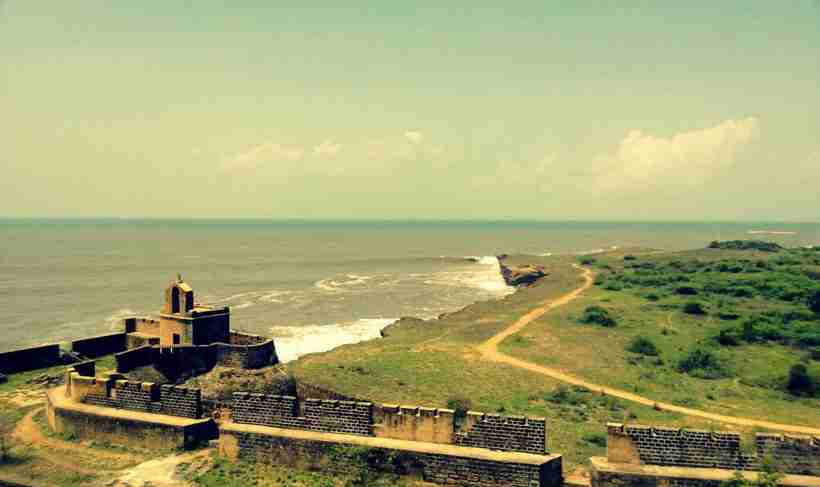
It is located on the Indian Western coast which was built by the Portuguese during their colonial rule and is now under the administration of the Indian government. The fort-cum-castle is known as ‘Praca de Diu’ in Portuguese.
The Fort of Diu is a colossal structure that occupies a prominent place on the tourist list. The enchanting fort commands a magnificent view of the sea and a jetty constructed on the northwestern coast which is still underused and was once used to trade with Cambay, Broach, and Surat in Gujarat. The lighthouse that one can climb leads to the highest point on the island and provides a spectacular view of the surrounding. Cannonballs litter the entire place and the parapet has a fantastic array of cannons.
Along with the Basilica of Bom Jesus in Old Goa, Diu fort was listed as the seven wonders of Portugal during their colonial rule. This new achievement further highlighted the importance of the fort and put it on the world tourism map. Diu fort forms a striking structure on the coast of the island.
4. Gangeshwar Mahadev Temple:-
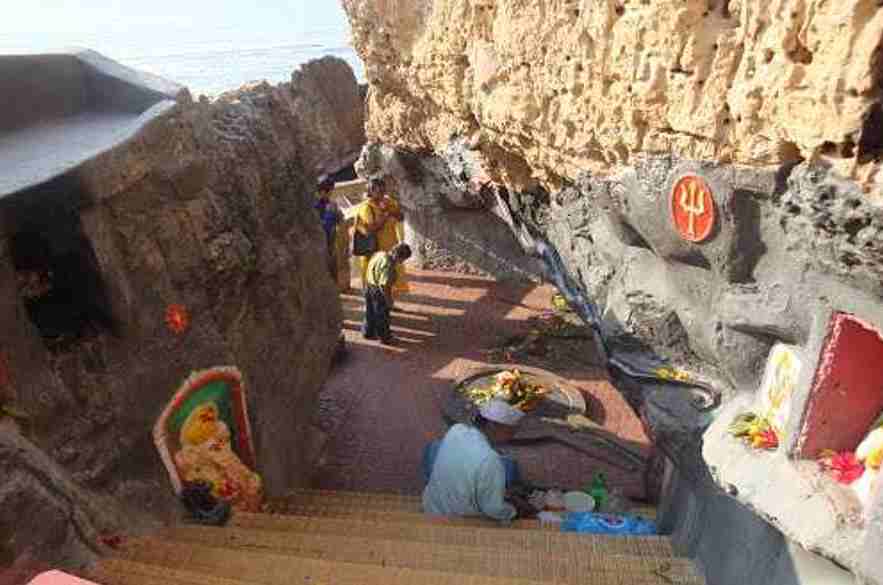
- Situated amidst serenity and scenic beauty, the Gangeshwar Temple is dedicated to the transformer of Hindu trinity the Lord Shiva. The temple Gangeshwar originally refers to Lord Shiva who is considered to be the Lord of River Ganga since it descended to earth starting from the tresses of Lord Shiva who is also the presiding deity of the Gangeshwar Mahadev Mandir.This ancient Hindu Temple is located 3 km away from Diu in the Fudam Village of Gujarat. It is believed to have been built by the Pandavas, and hence is famous for its five Shiva Lingas, i.e. rocks in the shape of Lord Shiva which are present in the middle of the sea. Only the tip of these rocks can be seen whenever there is a high tide because the sea water submerges them.
Major Fortunate And Unfortunate Events In Daman And Diu Antiquity
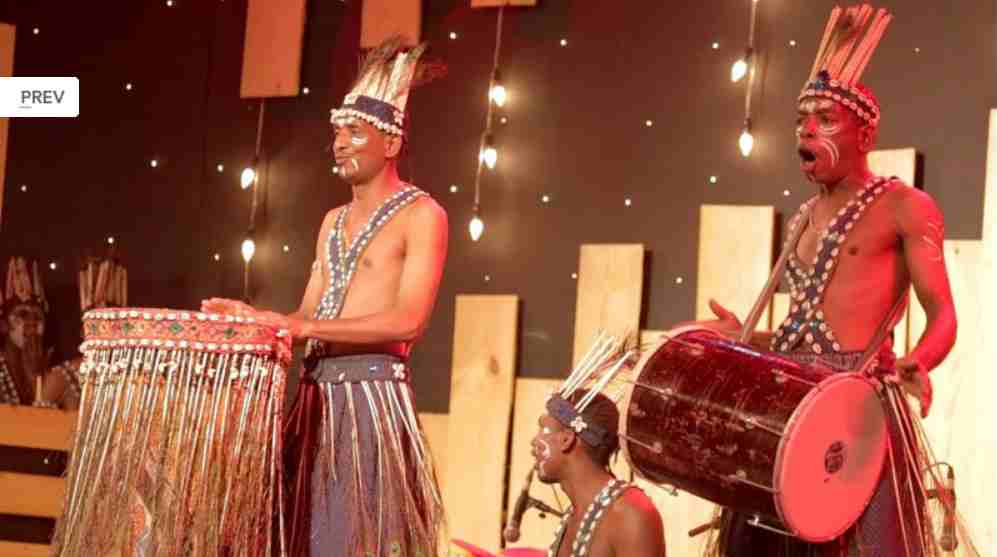
1. Operation Vijay
After India’s independence from Britain, Portugal refused to hand over its territories in India, and claimed that they were an integral part of the Portugal. India tried to persuade Portugal on a diplomatic level, to transfer its territories peacefully.
Indian nationalists then organized a resistance against Portuguese occupation and were finally able to seize Dadra and Nagar Haveli in 1954, and imposed an economic blockade over the rest of the Portuguese-held territories. This loss of Dadra and Nagar Haveli was huge for the Portuguese, and hence security was beefed up in their remaining Indian possessions.
According to the 2018 book by Col Y Udaya Chandar (retd.) ‘Independent India’s All the Seven Wars’, additional troops were brought in from Portugal, Angola, and Mozambique (the latter two were Portuguese colonies until 1975), and around 8,000 European, African, and Indian troops were split between the districts of Goa, Daman and Diu.
As attempts at conciliation failed in December 1961, India launched Operation Vijay against Portuguese India. While a major part of hostilities took place in Goa, the Daman and Diu territories also witnessed considerable action.
The Portuguese had a garrison and an air tower under their control in Daman and they had secured the region with small minefields. The ground advance on Daman was carried out by the 1 Maratha Light Infantry on December 18 and they suffered four casualties.
The Mystere fighters of the IAF also launched an air attack, which attacked Portuguese mortar positions inside the Moti Daman Fort.
Around 600 Portugal soldiers were taken prisoner and 10 were killed, after their side surrendered. A Portuguese naval ship, fearing capture, sailed to Karachi in Pakistan.
Meanwhile at Diu, the ground offensive was undertaken by the 20 Rajput and 4 Madras, on December 18. The INS Delhi bombarded targets on the shore. The IAF inflicted heavy damage, ultimately forcing the Portuguese to surrender.
2. Black Day For Daman
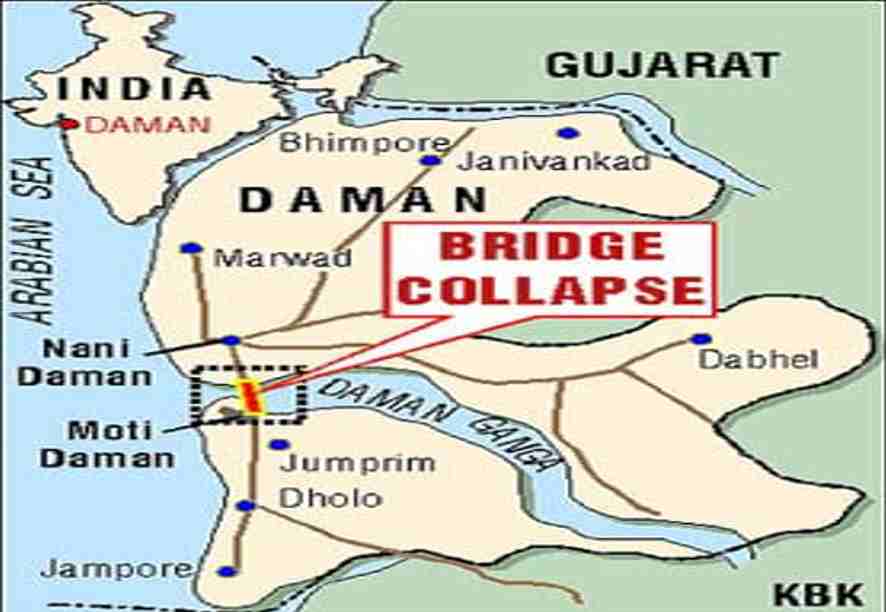
28 Aug. 2003 is remembered as a Black day in the history of Daman. A day that still brings tears to our eyes. The story of negligence led to the sudden demise of 28 children, teachers,s and 30 more.
According to the official’s the 100-year-old bridge connecting residential areas of Moti Daman and Nani Daman gave away and collapsed due to heavy rains killing at least 25 people, eight were missing and presumed dead and nearly ten vehicles and pedestrians fell into the Daman-Ganga river. Six of the seriously injured were admitted to a hospital in a neighboring town. According to the interview given by Additional Director General of Police (Daman) R P Upadhyay “We have recovered 24 bodies, of which 21 are of children and three are adult males. Eight people are still missing and it is feared that they might have been swept away into the Arabian Sea. Rescue operations are now coming to an end as chances of finding more bodies are negligible”. He said the deceased include 12 girls and nine boys and was students of Lady Fatima Convent School in Moti Daman.”
Personal Experience
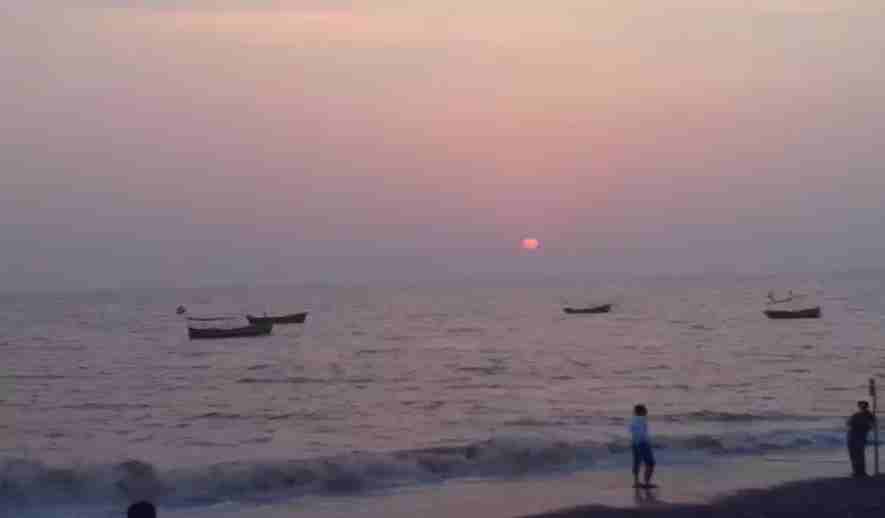
I was 10 years old when my family shifted to Daman. And since then, I have seen Daman change a lot. The population has grown, the schools have changed, the streets, the environment everything has changed. Although I have visited many other places since childhood yet whenever I travel back to India I want to stay in Daman. The climate of Daman is extremely pleasant with lots of beaches and parks which are worth visiting at least once. One of the most important things for me while visiting anyplace new is the authentic local food and Daman has aced there too. You will find some great old gems which serve authentic homemade food with a great ambiance. Another plus point of Daman is that the factories are located on the outskirts which makes the city environment pollution free and the temperature is lower than the neighboring places as its true nature is still intact! Another tourist attraction is the local Sunday fish market which offers a huge variety of fish, crabs, prawns, and lots of seafood. Therefore one can find quite a few restaurants serving delicious food here. Along with this, there are a variety of stall in the vicinity that serves mouthwatering food.
While from a tourist’s perspective it’s a great place to spend your vacation especially during weekends, holidays, New Year’s Eve, Christmas week, and so on. Hence making it more approachable from the month of October to March. The pleasant climate during these months makes the beaches more beautiful and peaceful. It is commonly famous for its monsoon season as during monsoon season there is a festival called Nariyal Purnima which is celebrated on a large scale and many events are organized during that period which makes the trip of tourists more enjoyable.
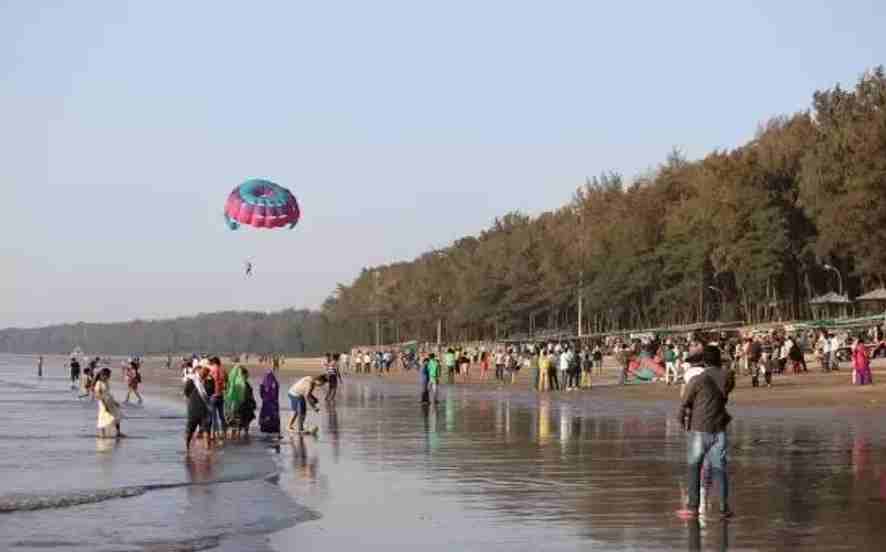
The stay facilities while visiting these districts are also very satisfying as most of the hotels are located near Beaches giving a wonderful sight to the visitor from their balcony. The hotels are within walking distance from the main shopping center hence providing the full shopping spree to shopping lovers.
Although the mid-range hotels are scattered throughout Daman but are still located in a decent area ensuring the safety of the tourist. The hotel along the seafront is dotted with a decent budget which is reasonable and provides good facilities like an in-house restaurant so as to make the visitors comfortable. Few resorts also offer cottages like tents which offer a beautiful view of the sea. The resorts have clean rooms and are well maintained with decent room services, parking space along with access to the bar, swimming pool, garden, etc.
Whereas Diu is an island of 38.8 sq miles that has been ruled over by the Mauryans, Guptas, and Mughals but it was the Portuguese who ruled over it the longest for more than 400 years. Diu is often referred to as “Ilha de Calma” which means island of peace, which in reality deserves the title. The beautiful forts, temples, and beaches it gives an immense sense of peace to one’s mind.
Although Diu Connectivity is moderate in comparison to that of Daman. One had to take a flight from Mumbai or have to travel by road as traveling by bus and train is slightly cumbersome. Thought the nearest stop to Diu is a small town called ‘Una’ located in Gujarat which has only 2 trains going on that route both having unreserved tickets only.
While Daman is famous for its beaches Diu on the other hand is famous for its forts. As Diu Fort is the main attraction of Diu. Along with the pleasant scenery, Diu has several multi-cuisine restaurants serving Gujarati, South Indian, Punjabi, Portuguese and Chinese.
Daman and Diu is a place that will give you the experience of a lifetime. Please do visit this gem.
Top 13 Interesting Facts About Daman And Diu
Diu was once one of the most important seaports for the spice trade in pre-modern times.
The battle of Diu was fought between naval forces of Portuguese and Sultan of Gujarat supported by Arabs for control of Diu port in the year 1509. The victory of the Portuguese solidified their position in the western part of India in 1509; the Battle of Diu was fought between Portugal and the Sultan of Gujarat (supported by Arabs, Mamluks, and the Republic of Venice).
Daman and Diu along with Goa were freed from Portuguese rule by the military operation in 1961. Both remained a common Union Territory till 1987. In 1987 Goa was given the status of independent state while Daman and Diu continued as Union Territory.
There is no post of Lieutenant Governor or Chief Minster like Delhi and Pondicherry. It is ruled and governed by the Administrator. Daman and Diu and Dadra & Nagar Haveli have both been ruled by the same administrator since it was established in 1987.
The High Court of Mumbai serves as the judiciary of Daman and Diu Union Territory.
Daman and Diu are well known for their seafood. Crabs, prawns, and lobsters are some of the special delicacies.
Fishing and salt farming are the major drivers of the economy.
Devka beach in Daman and Nagoa beach in Diu are the most popular tourist spots.
Daman and Diu have a high literacy rate of 87.07 % as per the 2011 census. If all the states and Union Territories are taken together then Daman and Diu stand at a sixth place by literacy. If only Union territories are considered then Daman and Diu is the second most literate territory of India.
Diu Fort was built in 1526 to safeguard the Portuguese interests in Diu from Mughal Ruler Humayun.
Paul’s Church which is similar in design to Bom Jesus Basilica of Goa was constructed in the year 1610. Both of these churches are built by the Portuguese.
The sex ratio which is a staggering low of just 618 is the poorest among all States and Union territories at 618 females per 1000 males.
The armed operation was code-named “Operation Vijay” by Indian Armed Forces. After fighting two days, India successfully annexed Goa, Daman, and Diu on 19 December 1967.



